“I am a worker in the image. For me, painting is a way of understanding fragments of reality by understanding the mechanism of the images that represent that reality. I need to give myself, as a meditative exercise, the necessary time to work on a white canvas until it becomes an image. For this reason I can only consider myself a realist painter.” (Ana Maria Micu)
Ana Maria Micu’s latest project Self-portrait with Indoor Plant is the route of a mature artist, capable of successfully working with photography, sketching with graphite and easel panting, of studying the mechanisms of visual images, to represent and self-represent using fragments of reality and, last but not least, to express the impact of images on her own feelings and artistic experiences. Her manifestations are spontaneous, just like in a performance, giving her works the freshness of the first notes of the painter’s familiar images that are part of the universe where she lives and creates. The banality of her subjects, which she selected over the years, have surprising compositional solutions (overlapping natural and artificial elements) and a playful feel to them. A bouquet of mint, two roses, a tomato, an apartment’s chaos, these are all perfect guises to unlock the mechanisms that transform a visual image into an artistic one.
Remarkable through its classical approach, the complexity of the artist’s vision begins with images of unprecedented spontaneity taken at her apartment or inside the universe of her studio. In her paintings, this kind of complexity is projected onto the canvas through a refined and savory sense of composition based on overlapping several styles: still life, landscape, interior and self-portrait. Documentation – the first stage – is achieved using camera snapshots taken over the years in apartments in Craiova. The painter uses these photographs (most of them are taken indoors, only one was taken in a supermarket parking lot) as a base for a process of meditation, transposing onto the spotless white canvas the tumultuous experiences induced by the subject in unforgettable images. Her paintings are, as I mentioned in an older article, the confessions of a restless artist soul that is in a perpetual transformation and evolution, trying to transform the act of creation into vocation of faith.
In her confessions about this project, Ana Maria Micu said that she is a visual artist whose main preoccupation is understanding of the mechanisms of the image and she is, above all else, a realist painter. Indeed, if we were to judge her works, she can be considered a visionary and a realis artist as well. Through introspection, imagination becomes the engine for creation, configurating– by overlapping two or more snapshots – that artistic image worthy of being immortalized on canvas. This arduous way of working takes a lot of time to think and it often creates recognizable images that have an abstract quality to them. The painter’s intense feelings and anxiety, exhibited by her own presence, creates egocentric works in which her personality is felt. Because of this emotional element, the classicism in her works is sometimes combined with surrealist and even expressionist influences.
Her project in Taiwan is a complex presentation, captured over many years, of a more or less speculative interaction between human and vegetable elements, between the artist’s personality and the work of art, between the interior and exterior reality. Although it appears to be a performance (a spontaneous manifestation), this extremely elaborated project is the result of a long period of reflection. The idea that everything happens for a reason is hinted upon using an indestructible bond between things, characters and plants.
Everyday life, with even its most insignificant details realistically described, is present in the painter’s works as a new spatial and temporal concept: space is limited and time is almost totally absent. This is an active meditation whose dynamics come from the act of creation. The artist’s personality determines the limits of time and space by placing the scenes in an enclosed space and by offering time related clues. The interaction between the constituent elements of the scene is often interrupted by the natural-artificial associations (plant – plastic bag, Can interact…to break down, rose – curtain, Around which there is…Then, chair – mint, Past placements in this location…), by bringing everyday life obsessions and anxieties to the table (being obsessed with order, Conflict is violence…to have a will of iron, The ache of longing…This very little seen), by the idea that not all of artist’s works or thoughts have an artistic finality (the artist – work relationship, Not only with the…But there are also) and, above all, by clearly and firmly marking the artist’s presence in her own works (her auto-representation, The majority who do not…I think, Self-portrait).
The coexistence of these elements, presented in perfect symbiosis, creates an emphatic connection with the viewers and shows a higher reality than the one we relate to. The works probably talk about the materiality of the works, as the titles also mention (Can interact…to break down, Around which there is…Then, Past placements in this location…, Conflict is violence…to have a will of iron, The ache of longing…This very little seen etc), about the artist’s own tensions and interior conflicts, the necessity to escape and hide herself in an enclosed universe. The artist defies/condemns certain preoccupations of the modern world, in favor of commending creativity, value and beauty. The hierarchy of values that Mica puts forward is not a traditional one, but rather a new one based on her own personality.
The paintings she makes and owns up to send a clear message and make her out to be a visual artist par excellence. Her reality is an interior one that allows very few outside intrusions, her image being the only way of communicating with the outside. The relationship between the viewer and the paintings – transparent, yet not easy – is directed by the clearly determined route the artist made with key elements and a more or less explicit discourse. To understand this discourse, although difficult, you must understand the mechanisms that underline her images, as well as be as receptive as possible to the message therein.
Ana Maria Micu’s Self-portrait with Indoor Plant was at Mind Set Art Center, Taipei, Taiwan between March 7 – April 4 2015.
POSTED BY
Alina Petrescu
Alina Petrescu (b. 1978, Bucharest) is an art historian and researcher. She works at the National Museum of Art of Romania. Her research focuses on the modernist movement and on some aspects of Romani...


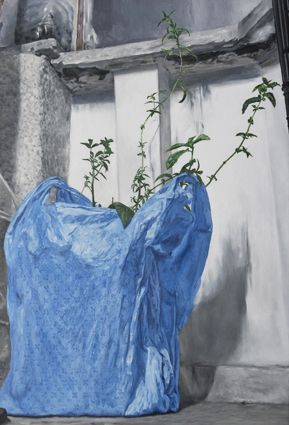
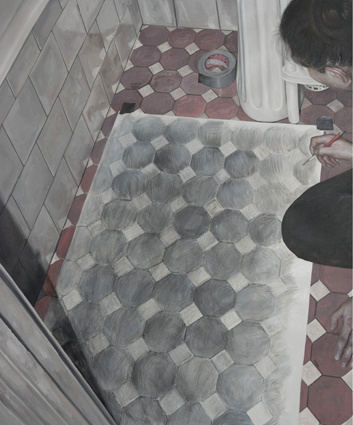
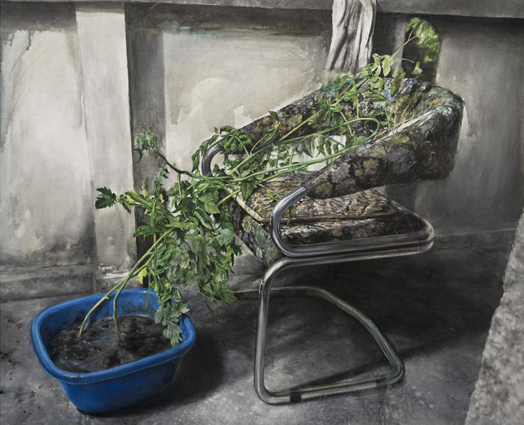
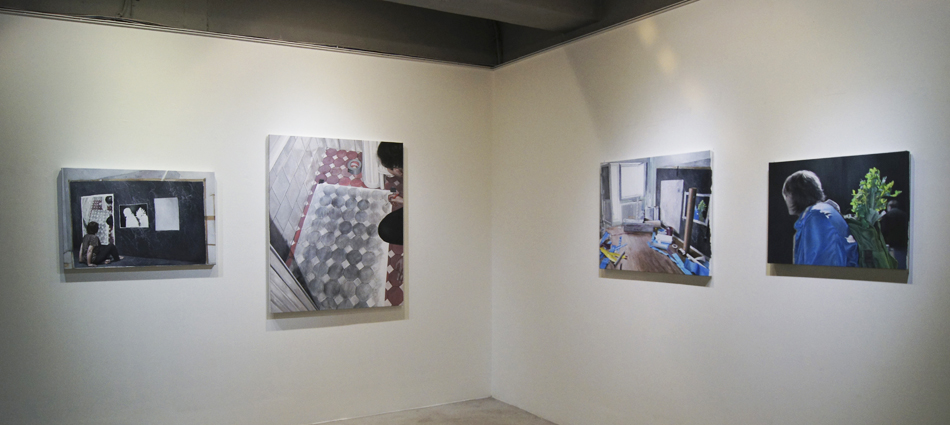
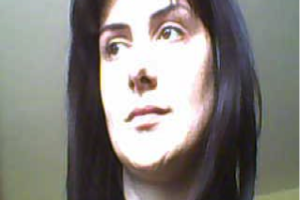
Comments are closed here.